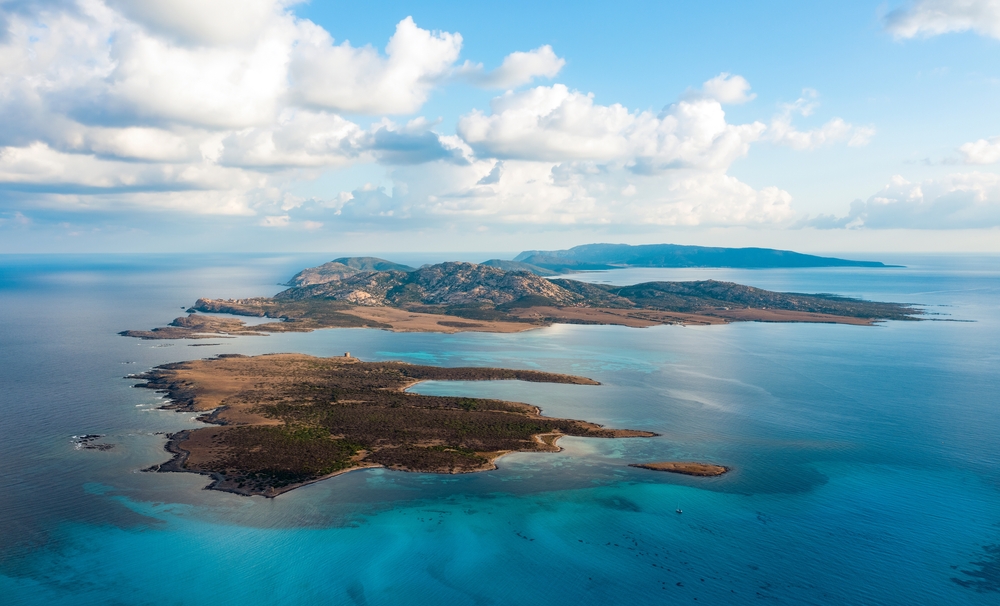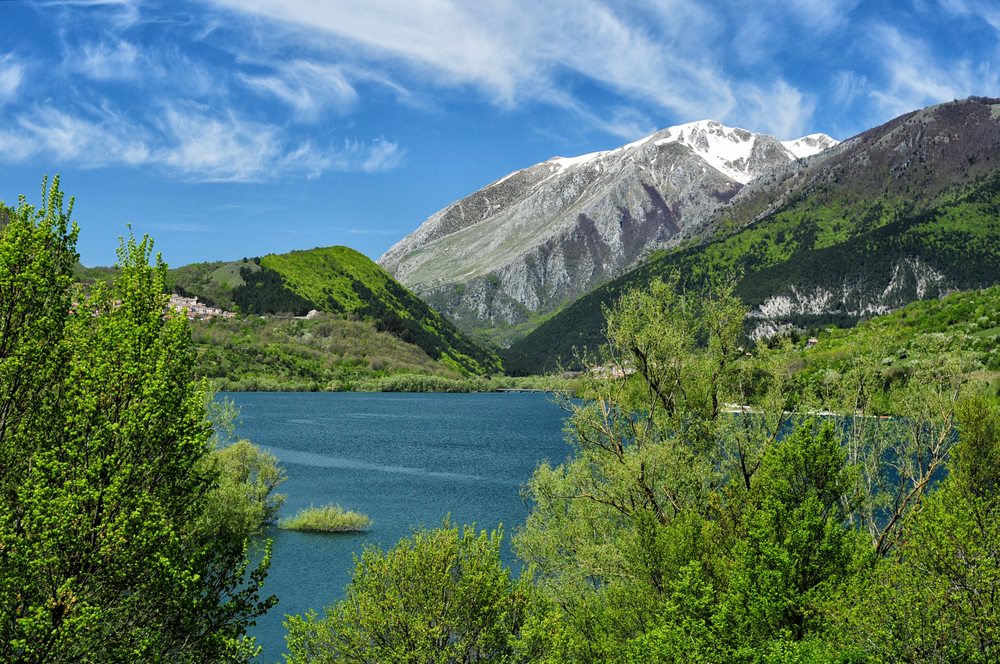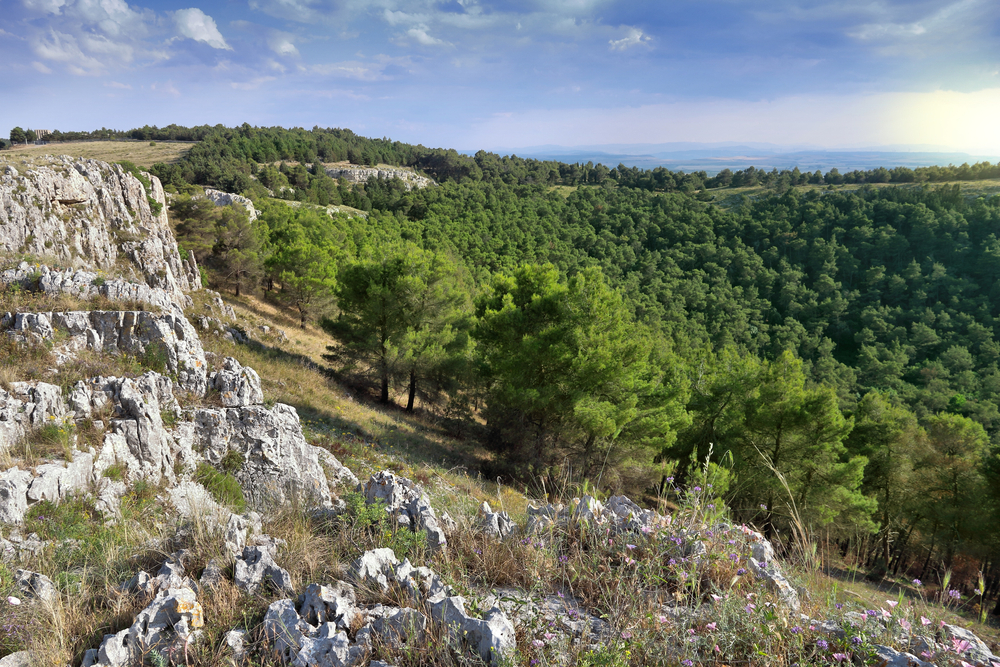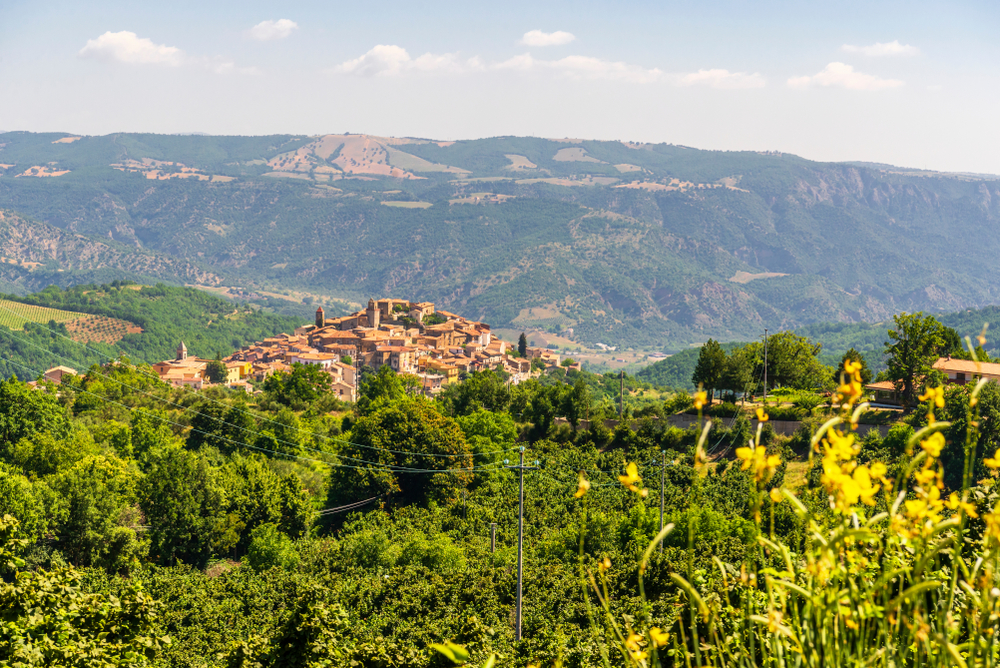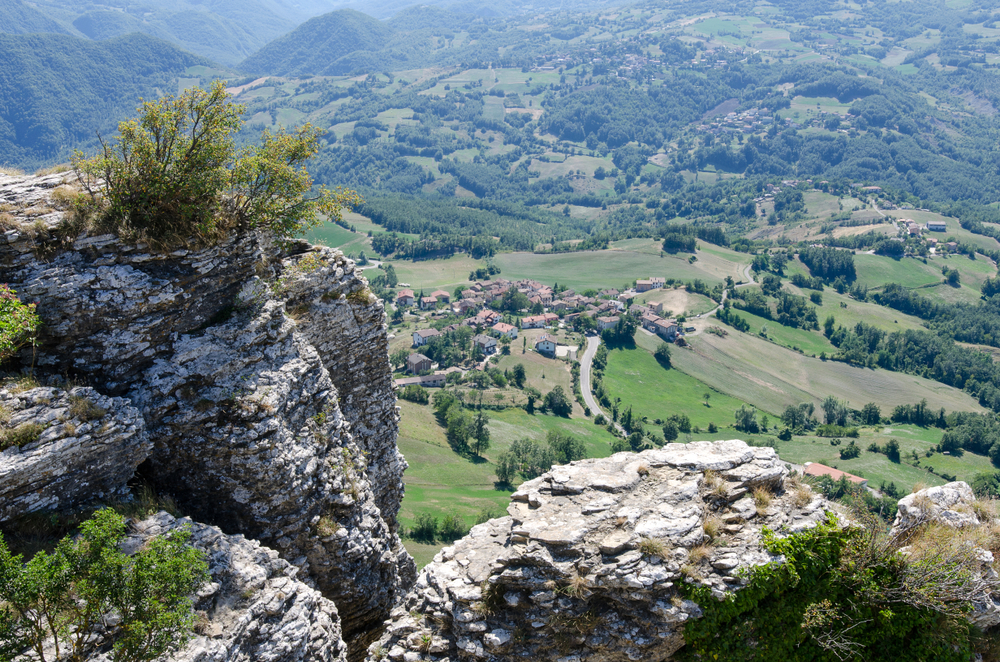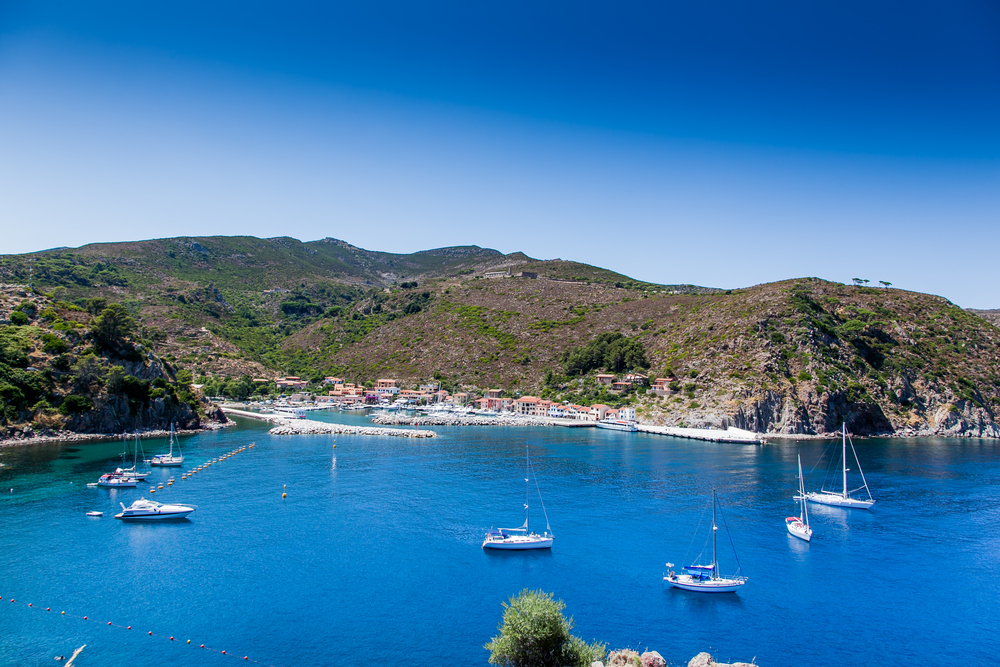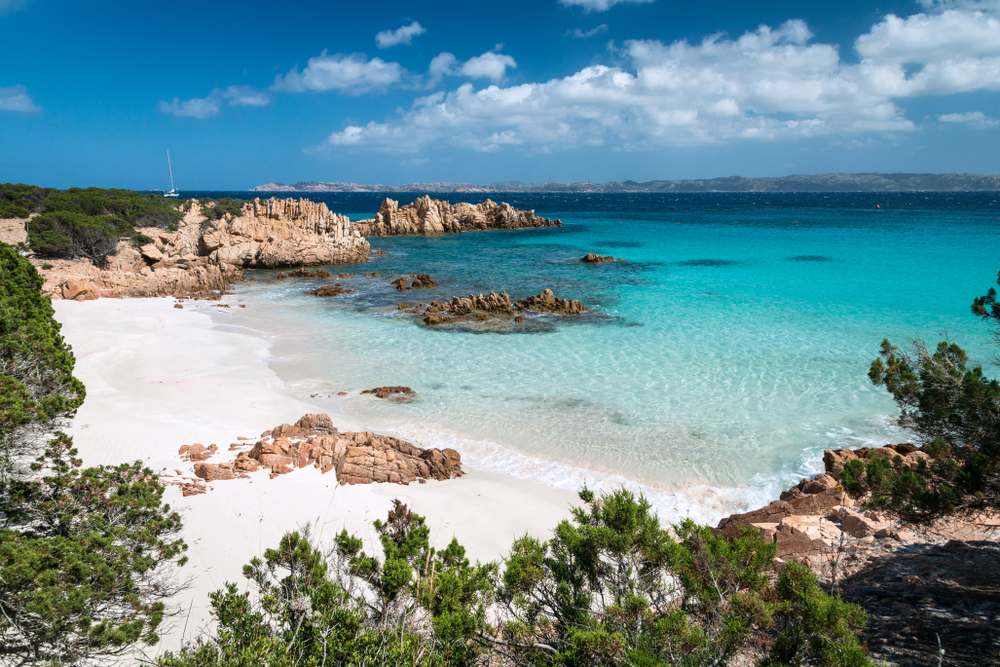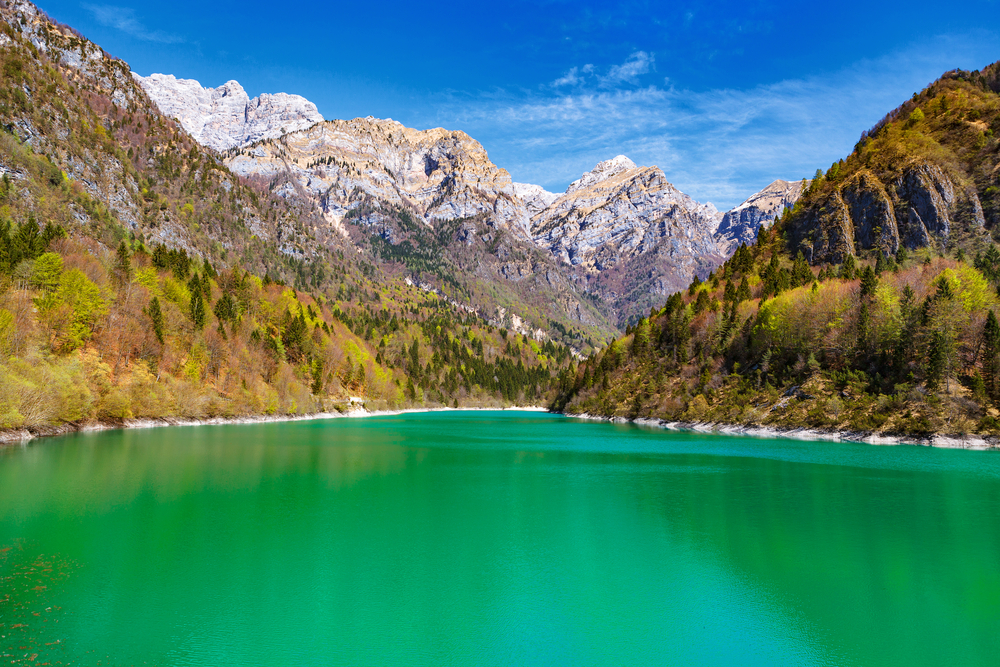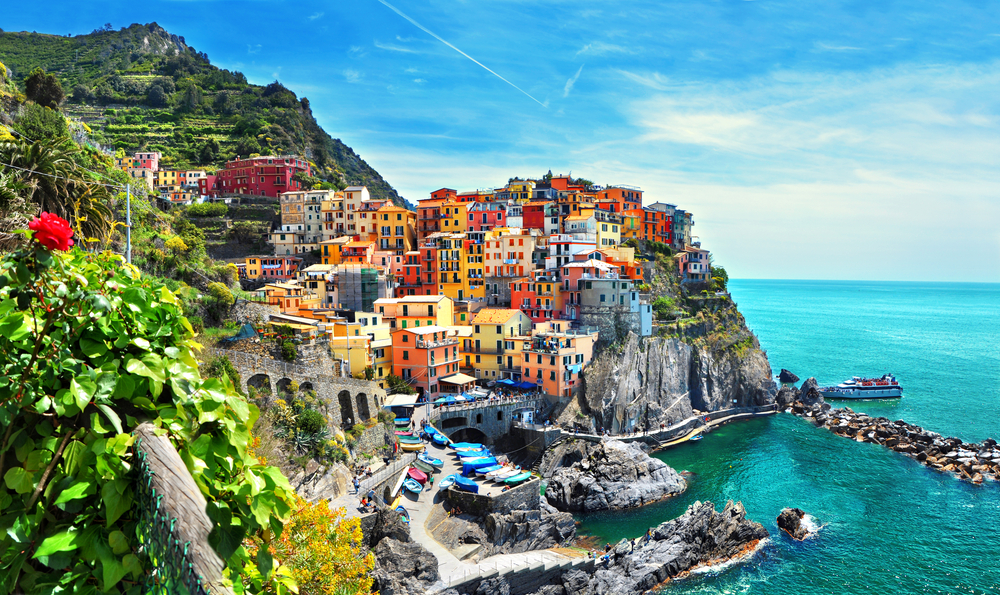Asinara Overview
Asinara National Park, known locally as Parco Nazionale dell’Asinara, is located off the northwest coast of Sardinia, Italy. Encompassing approximately 20.8 square miles (53.2 square kilometers), the park covers the entire island of Asinara and its surrounding waters.
Once used as a high-security prison, the island has remained largely unspoiled, making it one of the most pristine natural reserves in the Mediterranean. The landscape is characterized by rugged coastlines, rolling hills, and dense Mediterranean scrubland.
Among its defining geographic features are Punta della Scomunica, the island’s highest peak at 408 meters, and Cala d’Oliva, one of the most picturesque coves. The island also boasts small hidden beaches, granite rock formations, and open plains covered with aromatic herbs, low shrubs, and ancient olive trees, giving it a wild yet strikingly beautiful appearance.
The park is home to a remarkable variety of wildlife, some of which are unique to the island. One of its most iconic residents is the albino Asinara donkey, a rare breed of small, white donkeys that roam freely. In addition to these donkeys, visitors may encounter wild boars, mouflons, and Mediterranean tortoises.
The island also supports a rich bird population, with species such as the peregrine falcon, European shag, and Audouin’s gull frequently spotted. The diverse marine life surrounding the island includes dolphins, groupers, and loggerhead sea turtles, making it a fascinating area for underwater exploration. The combination of terrestrial and marine biodiversity has made Asinara a crucial habitat for conservation and ecological research.
One of the most notable features of Asinara National Park is its historical legacy. Once a quarantine station and later a high-security prison that housed mafia bosses and terrorists, the island has an air of mystery and intrigue. The abandoned prison buildings, particularly the one at Cala d’Oliva, attract visitors interested in history and the island’s past role in Italy’s criminal justice system.
The stark contrast between the untouched nature and the remnants of human occupation makes for a unique and thought-provoking experience. Visitors can also explore ancient ruins and remnants of past settlements, offering a glimpse into the island’s long history.
Asinara National Park offers several ways for visitors to experience its beauty. Hiking and cycling trails crisscross the island, providing opportunities to explore the varied terrain at a leisurely pace. Guided tours are available, often combining historical insights with wildlife observation.
Boat excursions allow visitors to admire the coastline and explore hidden beaches, while snorkeling and diving trips offer a chance to witness the vibrant marine life up close. Due to its protected status, access to the park is regulated, ensuring minimal impact on the fragile ecosystem. Electric vehicles and eco-friendly transportation options are encouraged, further preserving the island’s natural environment.
The park’s conservation efforts have been widely successful, particularly in protecting its endemic species and restoring its natural habitats. Strict regulations on fishing and tourism have helped maintain the health of both terrestrial and marine ecosystems.
However, challenges remain, such as controlling invasive species and balancing sustainable tourism with conservation needs. Despite these challenges, Asinara National Park stands as a shining example of how historical and natural preservation can coexist, offering visitors an unforgettable experience in one of Italy’s most unique and well-protected natural sanctuaries.








































































